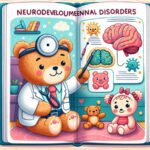Infantile Spasms (IS) are a type of seizure occurring in young children, typically between the ages of 4 to 8 months. This condition is part of a broader category known as epilepsy syndromes, which can be alarming and confusing for new parents. Understanding Infantile Spasms is crucial not only for early detection but also for seeking timely intervention that can significantly alter the course of a child’s development.
What are Infantile Spasms?
Infantile Spasms manifest as a sudden stiffening of the body, arms, and legs, often with a forward bending of the torso. These seizures are brief but can occur in clusters, often after waking up. While they may seem mild compared to other seizure types, they can have profound effects on a child’s brain development and cognitive functions. Recognizing these spasms early on can be challenging, as they can easily be mistaken for common reflexes or even colic.
The exact cause of Infantile Spasms is not always clear, but it can be associated with underlying neurological conditions, genetic disorders, or brain damage. It’s imperative for parents to observe any unusual movements or behaviors in their children and consult with a healthcare provider for a proper diagnosis.
How to Recognize Infantile Spasms
Recognizing Infantile Spasms involves observing the unique characteristics of the seizures. Parents might notice their child suddenly bending forward or their arms flinging outward. These spasms are typically very brief, lasting only a few seconds, but they can repeat many times throughout the day. Other signs to watch out for include changes in the child’s development, loss of skills, or unusual eye movements.
One of the key difficulties in diagnosing IS is their subtle nature and the tendency to occur in clusters. This can sometimes lead to delays in seeking medical advice. Documentation, such as video recording of the episodes, can be incredibly helpful for healthcare providers in making a diagnosis. For more information on recognizing and documenting these spasms, parents can consult the [Infantile Spasms Information Page](https://www.ninds.nih.gov/Disorders/All-Disorders/Infantile-Spasms-Information-Page) provided by the National Institute of Neurological Disorders and Stroke.
Treatment Options for Infantile Spasms
Treating Infantile Spasms promptly is critical as it can significantly impact a child’s developmental outcome. The treatment approach often involves a combination of antiepileptic drugs (AEDs) designed to control seizures. Hormonal therapies, such as adrenocorticotropic hormone (ACTH), have been effective in treating IS by reducing the frequency of spasms. In some cases, dietary changes like the ketogenic diet might be recommended.
It’s important for parents to work closely with a neurologist specializing in pediatric epilepsy. Treatment plans are highly individualized, taking into account the child’s overall health, the frequency of spasms, and any underlying conditions. For severe cases not responding to medication, surgery may be considered. Ongoing monitoring and adjustment of treatment are essential to managing IS effectively. Parents can learn more about these treatments by visiting the dedicated [Infantile Spasms page](https://babywhysandhows.com/infantile-spasms) on our website.
Support for Families Dealing with Infantile Spasms
Dealing with a diagnosis of Infantile Spasms can be overwhelming for families. Connecting with support groups and resources can provide much-needed emotional support and practical advice. Organizations such as the Epilepsy Foundation offer resources, including information on treatment options, ways to connect with other families, and advocacy.
Additionally, exploring services such as early intervention can be beneficial. These programs, often available through local health departments, provide therapies aimed at addressing developmental delays. It’s also essential for parents to take care of their mental health, seeking counseling or therapy as needed.
Living with Infantile Spasms: A Parent’s Perspective
Raising a child with Infantile Spasms is a journey that requires patience, resilience, and hope. Parents play a crucial role in their child’s care team, advocating for their needs and ensuring they receive the best possible care. Documenting seizures, managing treatment plans, and celebrating small milestones are all part of this journey.
While the road may be challenging, many children with IS achieve significant improvements with treatment. Progress may be gradual, and there may be setbacks, but with the right support and interventions, children can reach their full potential. For more insights and personal stories from parents navigating life with Infantile Spasms, visit our community stories section at [Baby Whys and Hows](https://babywhysandhows.com/infantile-spasms).
Understanding Infantile Spasms is the first step in navigating this complex condition. Through early detection, appropriate treatment, and supportive care, families can navigate the challenges of IS and provide their children with the opportunity to thrive.













